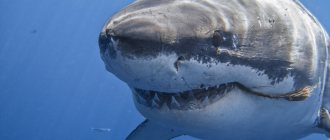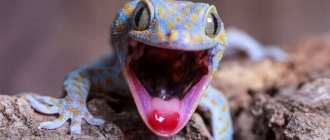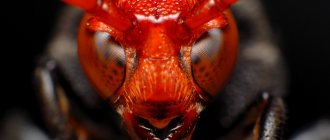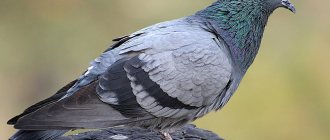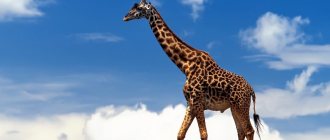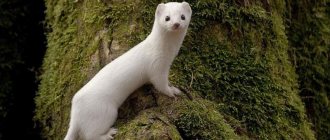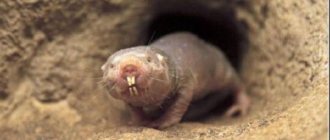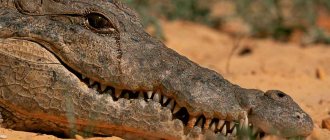What is the deadliest animal in the world (other than humans)? Well, judging by the number of people killed per year, it's not a shark or a snake, but something much smaller: a mosquito. Indeed, most recorded deaths caused by animals are the result of the disease they carry rather than physical confrontation.
Below we've compiled a list of the deadliest animals based on the number of human deaths they cause each year.
Pufferfish
In Japan and some other countries, the meat of the Puffer fish (known as Pufferfish) is a delicacy. However, if not handled carefully, eating fugu can be fatal. They carry large amounts of tetrodotoxin poison, which can effectively paralyze muscle tissue and suffocate the victim.
Although fishing and dining on puffer fish are strictly regulated, several accidents occur each year in Japan due to its consumption. It is much more poisonous than potassium cyanide and only licensed chefs can prepare and sell the fish.
Researchers believe that fugu toxicity results from consuming food contaminated with bacteria containing tetrodotoxin. In some parts of Japan, farmers have developed a method of producing "poison-free fugu" that prevents the fish from consuming certain prey.
Cones
0
Source:
At first glance, these mollusks are quite cute, especially their shells. Only now they defend themselves from enemies (and from humans) with the help of their poisonous harpoons. The venom of most cones is called conotoxin. There is currently no antidote. To remove the poison from the body, a blood transfusion is necessary.
sea wasp
The sea wasp is a special class of jellyfish (box jellyfish) that can be identified by its cube shape. Some species of box jellyfish are known to produce powerful venom that can be fatal to humans.
Perhaps the most poisonous species of jellyfish is Chironex fleckeri, commonly known as the Australian jellyfish. In severe cases of a Chironex fleckeri bite, it can cause a sudden heart attack. Between 1884 and 1996, 64 people died from this species in Australia alone. Today, more than 50 different species of Box Jellyfish are known.
Honey badger
1765
A small animal, both similar to a badger (in shape) and skunk (in color), does not seem dangerous at first glance. But this is a huge mistake. The handsome resident of Africa and some places in Asia is invulnerable, and therefore recklessly brave. His character is extremely touchy and vengeful to the last degree. He doesn't care who is in front of him - a lion, a buffalo, a man or an elephant. A stubborn kid will knock anyone to death. It is not called the honey badger for nothing. Huge, sharp claws turn any tree into splinters. Thick skin and thick wool protect against the bites of both bees and snakes. Any strength of poison brings him a sweet dream. Having had breakfast with half of the most dangerous cobra, which he eats with appetite along with the poison, he will sleep a little, and then finish the meal without leaving a single piece. The honey badger in its fur coat rotates, as in clothes: the body is on its own, and the skin is separate. No matter how he is grabbed, he will turn around and gnaw the enemy with his sharpest teeth absolutely mercilessly. The honey badger has powerful jaws; it effortlessly bites through turtle shells. And if the local population is absolutely not afraid of huge, scary rhinoceroses, not considering them dangerous, not a single person or animal comes close to the honey badger. Everyone knows that there is no animal more dangerous, smarter, more resourceful. He deliberately drives his prey into a corner, he has always developed one tactic or another. In addition, everything that is nearby is ingeniously used: the honey badger places logs, stones, and sticks on top of each other to get to the bee bins.
Sharks
Not all shark species are dangerous to humans, as most shark-related attacks are carried out by only four of them, namely the oceanic white shark, tiger shark, bull shark and great white shark. On average, about 80 unprovoked shark attacks are recorded annually. The number of people killed in these attacks is close to ten.
Shark attacks on people are not intended to feed. On the contrary, most of these attacks occur because sharks mistake surfers for prey. Research shows that in cases of unprovoked shark attacks, it is very likely that the shark mistook the person for common prey, such as a seal. Human meat also does not provide enough energy to sustain a basking shark.
The great white shark is perhaps the most dangerous of all shark species and is involved in the majority of unprovoked shark attacks.
Scorpion
Scorpios are distributed throughout the planet. Of all these beautiful arthropods, the black thick-tailed scorpion is considered dangerous, which can easily kill a camel. Well, a person is not a problem at all. He lives in the United Arab Emirates. Lives in ruins, in holes, under stones. Hunts at night on small vertebrates and insects.
5,000 human deaths per year. This is such a sad neighborhood with Scorpios. Its venom can kill an adult in less than seven hours. Children are naturally more susceptible to the effects of the poison. The size of an adult scorpion is up to 12 cm.
Wolf
Wolves are a highly territorial species, and territorial fighting is the single most significant cause of their death. Wolves attacks on humans are relatively rare, as they prefer to live in remote areas, away from human populations.
Research has shown that human presence in wolf territory can lead to increased stress levels. This is manifested by an increase in cortisol levels in wolves during any social activities near their places, for example, when traveling on snowmobiles.
Although humans are not their natural prey, wolves may attack humans either due to a severe shortage of prey in the wild or after gradually losing their fear of humans. On average, ten people die from wolf attacks every year.
Wolves infected with rabies pose a serious threat to humans: rabid wolves are much more dangerous than rabid dogs.
Bear
The animal amazes with its size, menacing fangs and powerful clawed paws. Today, the world knows eight species of bears, and their habitats are Asia, South and North America, and Europe. You are familiar with the most terrible representatives, with impressive body sizes and ferocious habits - these are brown and polar bears. Most bears are considered omnivores, but there is an exception - the polar bear. This carnivore, eating only animals, is not afraid of humans and has no enemies. The formidable bear is ready to eat everything that has flesh and blood - and its brothers are no exception! When meeting a bear, it is useless to run - it can reach speeds of about 60 km/h. But they do not attack humans so often, since you rarely see people in their habitats. But cute panda bears prefer only food of plant origin.
a lion
As a hypercarnivore (an animal whose diet consists of more than 70% meat) and top predator, the lion is known to hunt large mammals. Their diet includes everything from wild blue and African buffalo to the common warthog and even porcupine. Lions do not usually kill people, but several such incidents occur each year.
One of the best documented cases of lions eating humans is the Tsavo Man-Eaters. In 1898, about 28 railway workers building a bridge over the Tsavo River in Kenya were hunted down and killed by a pair of human-eating lions.
Many experts believe that cannibal behavior among Leos is not something unusual. If a situation arises where human corpses are available, the Lions will gradually begin to hunt humans.
The most dangerous fish
- Fugue - The delicious meat of this fish is considered a delicacy among Asian peoples, although this spherical specimen is incredibly poisonous. If the cook prepares the fugu incorrectly, the person will die painfully - first there will be complete paralysis, and then the respiratory organs will fail. And if the cook does not correctly remove all the poisonous parts when cutting the fugu - voila! Dinner will be the last of your life.
- Stonefish - This aquatic resident, ominous in appearance, is truly dangerous, although she never attacks a person without reason. It uses poison only for protection, and when it enters the body, the person experiences incredible pain, and then paralysis and tissue death occurs.
- Piranha - Everyone is familiar with these miniature, seemingly inconspicuous fish, at the sight of which there is absolutely no fear. But in the mouth of these dangerous underwater creatures there are several rows of small and razor-sharp teeth, ready to grab onto the victim and tear off pieces of flesh from it. They attack fish, marine animals, and rarely people. But you've all seen horror movies when a helpless victim is thrown into a pool with hungry piranhas, and after a while only bones remain.
Elephant
Adult elephants are one of the most feared animals. Apart from a few predators such as tigers, lions and hyenas, most animals keep their distance from them.
Due to their unusual size and nutritional requirements, elephants cannot coexist peacefully with humans. There are several well-documented cases of such violence (or perhaps retaliation) against people.
In the 1970s and 80s, when poaching and selective culling of wild elephants was at its peak, reports of young elephants attacking villages in Africa were rampant. These attacks continued throughout the 21st century.
In India, it is not uncommon for young elephants to destroy villages and kill civilians. Between 2000 and 2006, human deaths caused by elephants in the Indian state of Jharkhand are around 300, while in Assam it is close to 240.
In 2002, a group of elephants killed six people in an Indian village. This led to locals killing over 200 elephants near the region in retaliation. About a hundred people die every year due to elephant attacks around the world.
Land and river animals
Of the terrestrial fauna you should be wary of:
- hippos;
- crocodiles;
- elephants;
- buffaloes
Hippos
Careless predators
Despite its clumsiness and sluggishness, the hippopotamus was included in the rating. In fact, their behavior changes dramatically and is difficult to predict. They are aggressive and attack people passing by, who do not even need to pay attention to them. You should be wary of being in the water with them at the same time. Their mouth opens 180 degrees and can easily break a boat. They are capable of accelerating up to 30 km per hour on land. According to average statistics, 100 people die from their attacks.
Crocodiles
Creepy Large Predator
This predator is incredibly tolerant. He waits a long time before committing an attack. Most often, their victims are residents of African villages. People are forced to get water, so they have to put up with the presence of such neighbors. More than 500 deaths involving crocodiles are recorded per year.
Elephant
Dangerous herbivore
In ancient times, elephants were used as an instrument for capital punishment. This is the most intelligent creature, revered by many peoples. Elephants sense threats from others well, which is the main reason for their attacks. They are also characterized by causeless aggression. More than 300 deaths occur per year, including zoo employees.
Interesting! In one Indian village, there were regular attacks by a killer elephant, which sent 35 people to the next world.
Buffaloes
Deadly herbivore
They live in large families in African countries located south of the Sahara Desert and are at the stage of extinction. In fact, these are calm animals that peacefully graze in the fields. If someone wants to attack them or harm their children, then they become aggressive and are capable of killing the enemy.
It is distinguished by its large size and weight. They are often hunted. They resist to the last, trying to break free and defend themselves.
If a hunter wounds a young or adult individual, then most likely he will become a victim of an attack. Buffalo horns pierce the body to death and effortlessly.
Hippopotamus
The hippopotamus, or simply hippopotamus, is the third largest mammal on earth after the elephant and rhinoceros. They are considered one of the most dangerous land animals, not only because of their size, but also because of their highly aggressive and unpredictable nature.
An adult male hippopotamus weighs about 680 kg on average, although it can move at speeds of 30 km/h for a short period of time. Their menacing jaws can produce a bite force of 8,100 newtons. For perspective, a lion's bite force is about 4,500 Newtons.
Hippos are very dangerous in lakes and rivers, where they spent most of their lives. Small boats and vessels are vulnerable to their aggressive attacks, which can even result in casualties. In 2014, a hippopotamus attacked a boat carrying 13 people near Niger's capital, Niamey. All 13 of them died.
Did you know that although they are physically similar to many ungulates such as pigs and wild boars, hippos are genetically much closer to whales and dolphins?
The most dangerous arachnids are the banana spider.
Outwardly, it is not so scary, but it occupies an honorable place in the Guinness Book of Records as the most sinister killer. This title was received and well deserved - most people died from the poison of the greenish spider. It is dangerous because it does not have a specific habitat - it can live anywhere, so it is better to know the killer spider by sight!
Crocodile
The crocodile is one of the deadliest animals in the world. Of the 16 known species of crocodiles, only the larger ones pose a serious threat to humans. The two largest and most aggressive species, the Nile crocodile and the saltwater crocodile, are responsible for the deaths of hundreds of people every year in Africa and Southeast Asia. The study shows that about half of attacks from these two species are fatal.
Other species, such as the Razorback crocodile and the Swamp crocodile, have been implicated in attacks on humans, although they have a lower mortality rate.
Predators
Predatory animals have always posed a threat to others. These include:
- bears;
- big cats;
The Bears
Photo of a mother bear and a bear cub
Many people think the animals are cute and harmless, but this is a big misconception. They rarely attack first, but if someone has invaded his territory, he will defend it to the last. It so happens that part of their habitat overlaps with human territory. On average, 25 people die from bear attacks. The greatest danger comes from grizzlies tearing apart their victims. Females are fierce towards anyone who enters their area. It is impossible to hide from an angry bear.
Big cats
Photo of a leopard
Lions, jaguars, tigers kill about 1000 people. If you find yourself alone with an animal, then the probability of staying alive is zero, especially if the predator is in its usual territory.
Tapeworms
Tapeworm is the common name given to a large family of endoparasites that live in the digestive tract of various vertebrates, including humans. A person infected with a tapeworm can develop severe health conditions that, if left untreated, can even lead to death.
One such condition is hydatic disease, in which the victim develops cancer-like cysts. Their rupture can provoke new complications and, in some cases, cause seizures. In 2015, about 1,200 people died from the disease worldwide.
Anaconda
Although anacondas are shorter than pythons, their mass is still higher. Typically an individual is about 5 m long and weighs about 100 kg. Although anacondas' traditional diet consists of turtles, birds, small mammals and even other snakes, they can sometimes attack humans.
Usually the anaconda, like other boas, waits almost motionlessly for the approach of prey, after which it bites the victim with lightning speed and wraps itself around it. After such an attack, a person essentially has no chance of salvation unless there are other people nearby.
Nematodes
Roundworms, also known as nematodes, are a diverse group of parasites found in virtually every ecosystem, from salt water to fresh water and the tropics to polar regions. About 25,000 species of roundworms have been identified so far, and several of them are known to parasitize or infect humans.
Ascariasis, an infectious disease caused by a certain type of roundworm (Ascaris lumbricoides), killed 2,700 people worldwide in 2010. At least 428 million people (worldwide) have been affected by hookworm infection. Although it is rarely fatal, it can cause anemia and severe protein deficiency in those affected.
Long-horned sabertooth
0
Source:
This fish does not meet general beauty standards in any way. The long-horned sabertooth has a terrifying appearance, but is not dangerous to humans. It lives in tropical and subtropical waters of the Pacific, Atlantic and Indian oceans at great depths. In terms of the ratio of body length to the length of teeth, the saber tooth has the longest teeth among fish known to science.
×
Freshwater Snail
Schistosomiasis is the second deadliest parasitic disease in the world after malaria. In 2015, the number of people affected by the disease worldwide was more than 250 million, and about 200 thousand people die from it every year.
Another name for schistosomiasis is snail fever because the disease is spread primarily by freshwater snails infected with a parasitic flatworm known as schistosome. Other parasitic infections transmitted by freshwater snail species include fascioliasis, fasciolopsiosis, and paragonism.
Tiger
Tigers, like lions, mainly hunt prey that is significantly larger than them. When the usual prey is absent, predators begin to commit robbery attacks on livestock. Tigers can become man-eaters for three reasons: wounds, old age and hunger. Sometimes a person accidentally comes across a tigress with cubs, and maternal instinct makes her attack.
Only in one place on earth - in the Sundarbans National Park (India) cannibalism of tigers has become commonplace. The predators living here view people as their rightful prey. This is explained by the fact that sport hunting for tigers has never existed in the reserve, so the animals do not experience any fear of humans.
Tsetse fly
The tsetse fly is a blood-feeding family of Glossinidae that is endemic to tropical Africa. They are the main carrier of the trypanosome parasite that causes trypanosomiasis, also known as sleeping sickness in humans.
The infection enters human tissue after a tsetse bite. From there, the infection enters the lymphatic system and then into the bloodstream. It eventually crosses the blood-brain barrier and enters the central nervous system. Symptoms include fever, headaches, trouble sleeping and confusion. The disease is usually fatal if left untreated for a long time.
In 2010, the number of deaths caused by African trypanosomiasis was approximately 9,000.
Viper
After a viper bite, hemorrhagic edema, necrosis and hemorrhagic penetration of tissues in the area of injection of the poison quickly occur, accompanied by dizziness, lethargy, headache, nausea, and shortness of breath. Subsequently, progressive shock of complex origin, acute anemia, intravascular coagulation, and increased capillary permeability develop. In severe cases, degenerative changes occur in the liver and kidneys.
4074
Dog
One of the deadliest viruses on earth, the rabies virus, claimed more than 17,000 lives in 2015, and about 95 percent of those deaths occurred in Asia and Africa. The disease can cause partial paralysis, anxiety, paranoia and hallucinations. Victims may also develop hydrophobia, or the fear of water. Although rabies can be transmitted from humans to several animals infected with the virus, including bats and monkeys, the main cause of the disease is dogs. Their bites cause about 99 percent of rabies cases.
Wolverine
0
Source:
A predatory mammal of the mustelid family. Outwardly, the wolverine resembles more of a bear or a badger. The wolverine spends most of its life alone, actively defending the boundaries of its territory from individuals of its own sex. Thanks to its powerful paws and long claws, the wolverine easily climbs trees. Has keen vision, hearing and sense of smell. It chases prey at a run, is very resilient and starves its prey to death. It can recapture prey from other predators, and is generally quite aggressive.
Snakes
There are about 700 species of venomous snakes in the world. The black mamba, Africa's most feared snake, can render a person unconscious within 45 minutes of being bitten. Signs of severe envenomation, such as a metallic taste, blurred vision, and shortness of breath, become apparent within the first 10 minutes.
On the other hand, in the case of the coastal taipan (one of the deadliest species of Australian snakes), death can occur within 3-6 hours after the bite. However, in case of severe infestation, it can occur within half an hour.
According to the World Health Organization, between 80,000 and 137,000 people worldwide die from snakebites each year.
Rhinoceros
These cautious animals, as a rule, avoid the proximity of humans, however, when irritated, wounded or very frightened, they rush at the enemy with rage. While running, they reach speeds of up to 40 km/h and then strike with their horns. With their enormous strength and mass, rhinoceroses can cause severe injuries to humans.
1158
Human
Humans are the most intelligent and advanced animal species on earth. Our ability to use tools more efficiently than any other animal has helped us overcome countless challenges in the past. And of course, we will continue to do this in the future. These unique abilities, however, have increased our ability to cause greater harm to other animals, as well as other humans.
Some estimates place the total death toll from the war alone at more than 150 million. The oldest known case of intergroup violence occurred about 10,000 years ago. According to the United Nations Office on Drugs and Crime, there were approximately 437,000 reported homicides in 2012.
Palm thief
0
Source:
Palm thieves are common in the tropics on the islands of the Indian and Western Pacific Oceans and lead a land-based lifestyle. The claws of the front pair of walking legs are capable of developing a force that allows them to crush small bones. They feed on the pulp of coconuts and fruits. In the past, it was believed that the palm thief could crack coconuts, but in reality he is simply looking for coconuts that have cracked as a result of falling from the palm tree. Rumor has it that these crayfish even prey on small animals.
Mosquito
Despite their miniature size, mosquitoes are equipped with the means to kill both humans and other animals. The mosquito breed is deadly due to its ability to carry diseases.
According to a WHO report, about 405,000 people died from malaria in 2018-2019. This is just one of many life-threatening vector-borne diseases caused by mosquitoes. Dengue fever, another deadly infectious disease, claims about 40,000 lives every year.
Mosquitoes of the genus Aedes, Culex and Anopheles are largely responsible for diseases such as Chikungunya, encephalitis, and West Nile virus, which together kill about 725,000 people every year worldwide.
Hippopotamus
For all its external clumsiness, a hippopotamus, when angry, can quickly attack both an elephant and a person. He tramples the victim with his thick legs and tears with monstrous teeth.
Elk
Elk is another artiodactyl on our list. Moreover, to meet him, you don’t need to go to Africa. You can also encounter it in our forests. This beautiful and strong animal tries to avoid meeting people, but in a state of anxiety sometimes reacts with extraordinary aggression. When protecting the younger generation, moose show particular rage. Even more people suffer from elk than from bears.
African buffalo
The African buffalo (Syncerus caffer) is also known as the Black Death. And all because it can be deadly. Locals say buffalo have killed more hunters than any other animal in Africa. How do you like this description of these “bulls”: “an angry buffalo will circle and chase its prey, waiting for the right moment to tear it apart with its massive, thick horns.”
Tell your amazing story
GET 500 rubles
Spotted dart frog
Spotted dart frogs (Dendrobates tinctorius), or poison dart frogs, prefer to dress in the brightest colors. However, don't let this beauty fool you. These are one of the most dangerous predators in the world. They secrete toxins from their skin that are fatal to any creature. The golden dart frog has enough poison to kill 10 grown men!
killer whale
The Killer Whale is a very dangerous predator known as the Killer Whale. As a predator, he knows all the secrets of flawless work. In addition, it is a very strong animal. The diet is quite wide due to the hunting techniques used. Particularly popular are seals and penguins captured underwater.
In nature, there are examples of killer whales jumping onto the shore while chasing prey. This is a social animal. Therefore, as a rule, killer whales live in groups in calm backwaters. The number of individuals can reach more than 10 pieces. Hunting is also carried out in a group. The killer whale can use various marine predators as food, such as sharks, etc.
King Cobra
This is one of the largest snakes in the world, and besides, it is also poisonous. The king cobra (Ophiophagus hannah) reaches 5.7 m in length and weighs up to 9 kg. When cobras attack, they can literally lift a third of their body off the ground while still moving forward. So she tries to make herself look even more intimidating. The good news is that king cobras are shy and try to avoid people as much as possible. But if the snake feels like it is backed into a corner, it becomes extremely aggressive.
Africanized bee
The Africanized bee, or African honey bee, is also known as the “killer bee.” The species spread through Mexico and the United States to South and Central America, according to Columbia University. Africanized bees will attack you even if you don't provoke them. They sting only once and die soon after.
